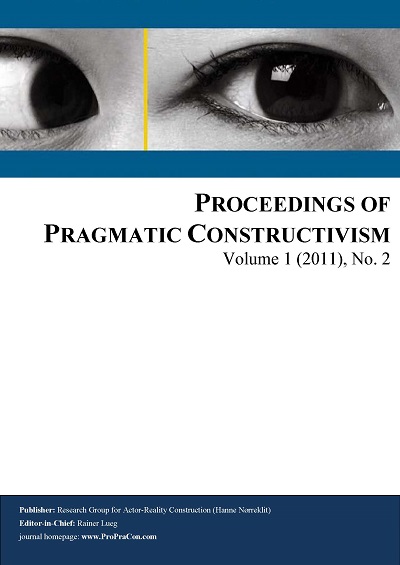The process of producing annual reports – Models derived from consultants’ narratives
DOI:
https://doi.org/10.7146/propracon.v1i2.16662Nøgleord:
Annual reports, disclosure theory, stakeholder theory, legitimacy theory, public relations, production process, SwedenResumé
Annual reports are an important means of communication for companies. Readers use the information in the annual report to form a general picture of a company. In general, not many readers of annual reports reflect that this document is, apart from the numbers in the accounts, in large parts outsourced to public relations companies.
Although information content of corporate annual reports have been studied in many way the production process has been absent in accounting research so far. The purpose of this article is to describe and examine the process of producing annual reports as a means of communication for listed Swedish corporations. This study focuses on the interplay between the corporation’s personnel and the public relations agency. An examination of the annual report production process shows elements that are most useful in describing the communication process. A systematic review of the annual report production process necessitates the development of a model which will organize the complex elements of communication that derives from the interaction of the multinational with its public relations agency.
The analysis shows that there is interplay between a listed company and public relations agency that makes aims to produce a certain picture among the readers of annual reports. However, it is not possible to draw a strict line that public relations work is solely limited to layout and pictures. In some cases of annual report production, a listed company is heavily influenced and open to suggestions by the specific knowledge of a public relations company, when it comes to content and structure of texts numbers. Therefore, it is important to understand the process of annual report production as an interplay between the company and public relations professionals, as the annual report is contributing to maintain legitimacy, creating trust and confidence in the company and the activities it engages in.Downloads
Publiceret
Citation/Eksport
Nummer
Sektion
Licens
Previous and future use of the work
ProPraCon assumes the non-exclusive rights to publish and store the work of its authors, once they have consented to a publication. Since the rights to publish are non-exclusive, authors are free to re-use their work, e.g., to publish it in other media (as ProPraCon aims at publishing proceedings). Hence, it is explicitly allowed that works submitted to ProPraCon may be published in a somehow similar form in other media. Yet, submitting authors warrant that the work is not an infringement of any existing copyright and will indemnify the publisher against any breach of such warranty.
Permissions
By submitting work to ProPraCon, the authors declare that they have permission to use any content that has not been created by them. Specifically, when using tables, figures or excerpts of more than 400 words, it is expected that the authors…
- …obtain written permission of copyright for the use in print and electronic formats of any of their text, illustrations, graphics, or other material, in their work. This includes any minor adaptations.
- …acknowledge the original source in captions and in the reference list.





